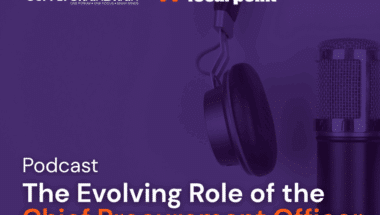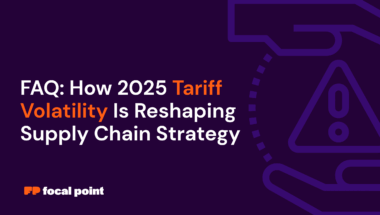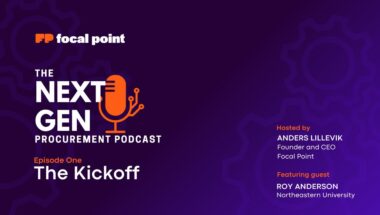Over the past few months, I’ve taken readers through four articles in a five-part series on the evolving role of procurement in modern businesses. The goal of this series was to help chief procurement officers and other C-suite executives to understand the many ways in which procurement has changed in the last decade, using technology to refine operations and become a key driver of efficiency for enterprises of any size.
My first piece explored the role of the chief procurement officer and its growing importance in an organization’s financial operations and due diligence. From there we examined some of the most common challenges and inefficiencies facing today’s procurement departments, followed by an assessment of the blind spots that prevent organizations from achieving true digitalization of their procurement processes. Most recently, I identified the three must-have components for a modern procurement management platform, laying the groundwork for any organization to rapidly upgrade and optimize their procurement function.
As we wrap up this series, I’d like to make the case for why businesses must act now to seize the opportunity offered by modern procurement management platforms. This is no longer an area in which business leaders can delay their investment — they must act now in order to meet their financial, social, product and technology goals.
The moment for alignment in procurement
The last two years saw rapid changes to the ways organizations conduct business, demonstrating that digital transformation is no longer a “nice to have” — it’s table stakes. Every enterprise is now a tech company, and as a result, these organizations must move to bring IT and business in much closer alignment. It’s one thing to upgrade an organization’s processes and technologies; it’s another thing entirely to make those upgrades central to the organization’s overall business strategy.
Enterprises that use SaaS tools to automate processes must take the time to empower business users to apply these technologies without having to wait on their IT colleagues. Giving every member of the organization access to its most powerful tools and platforms unlocks the possibility for rapid, transformational change. In the case of procurement, business leaders can use their new automated tools to rapidly adjust and refine workflows — resulting in an immediate balance sheet benefit. Modern procurement management platforms offer an additional benefit: by consolidating point solutions into a single tool, these platforms help enterprises to increase the efficiency and ROI on the technology and software investments they’ve already made.
Beyond costs and revenues, procurement enhancements can also impact an enterprise’s most important social, cultural and risk management initiatives. Automated procurement platforms make it easy for organizations to track progress towards key ESG and DE&I goals, ensuring that suppliers and vendors meet goals for diversity and sustainability. This represents another opportunity for alignment: as business leaders set goals in these areas, their colleagues in IT can work to realize them through a feature-rich, AI-backed procurement solution.
Starting somewhere with DE&I and ESG
While the jury is still out on what and how some of the ESG components will be measured, some companies are taking initiative towards making progress. Some practitioners are aligning with generally accepted “right things to do,” such as the 17 goals of the United Nations Department of Economic and Social Affairs. We are seeing organizations selecting which of the 17 goals are more applicable to them and establishing procurement and supply chain ESG goals around them, such as saving energy, reducing waste or reducing water consumption.
Companies make progress on these items by establishing alternative requirements or challenging bidding suppliers to propose alternative products or ways to achieve requirements while achieving stated ESG goals. Getting relevant benchmarks between “old” and “new” specifications can go a long way towards documentable, real progress on ESG goals.
What the future holds
This article series took us through the history of procurement leading up to present trends and opportunities. As we look to the future, it’s clear that technology will be essential for organizations to mitigate supply chain concerns, gain clarity on their overall spending, and better understand the vendors and suppliers with which they work. This is not a moment to stand in place. Those organizations who hesitate to modernize procurement will soon find themselves falling behind the competition.
The tools of the past — spreadsheets and email — are no longer equipped to handle the task at hand, if they ever were. Successful organizations will identify procurement’s potential as a revenue generator rather than a cost center; the only way to reach that potential is with capable technologies.
This is a pivotal moment for chief procurement officers and their teams. If you haven’t already, I encourage you to revisit this series from the beginning as I outline the development of modern procurement platforms, their potential impact, and why it matters.



